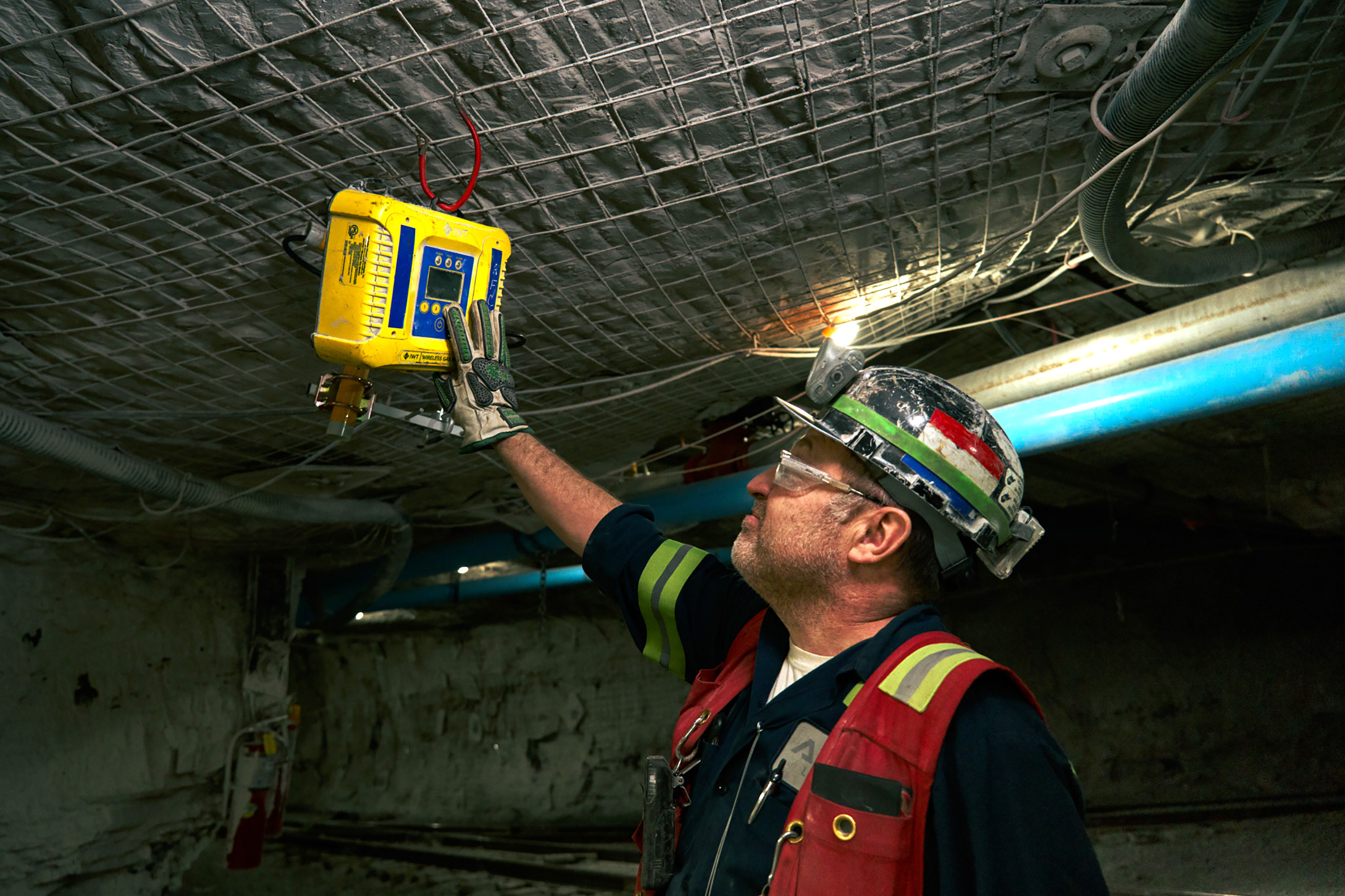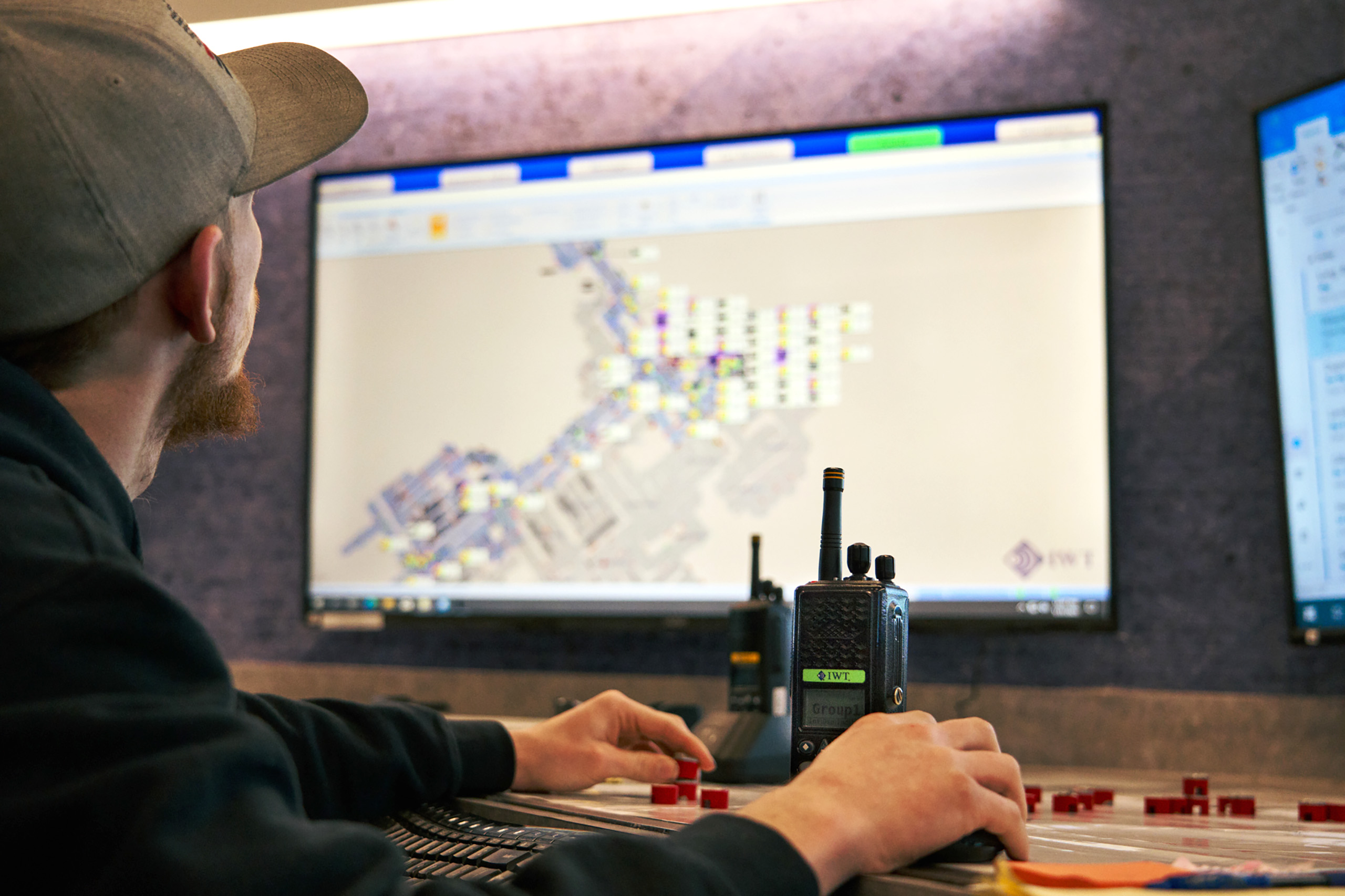By Chad Barnett

Understanding that reliable communication and accurate tracking is vital to underground mine safety, the U.S. government mandated new, more reliable systems be implemented as part of the 2006 MINER Act. This mandate, which followed a series of mine fatalities, has made a significant impact on underground coal mining operations with improved safety and enhanced production.
However, it is worth pointing out that some communication and tracking technologies are inherently more robust and better suited to the harsh realities of underground mining. Reliability is key when considering safety measures of any kind, and paramount when discussing communication and tracking.
The ‘safety’ of legacy systems
Traditionally, mines have long been dependent on hard-wired communications systems using cable types such as coaxial, twisted pair or fiber. These traditional hard-wired systems require laying cable, ensuring there are no cuts or breaks in the lines, and then abandoning or retrieving those lines when the mining operation advances.
The commonly used leaky feeder system is designed to radiate signals out of a coaxial cable that reaches transmitters up to 200 meters from the cable itself. Although the leaky feeder system improves transmission distance over traditional coaxial cabling, it still requires laying and maintaining wires and antennas. The leaky feeder, with its gap-prone wires, along with the inefficient necessity of line amplifiers at regular intervals, is expensive to operate, prone to failure, and still does not always offer clear voice communication.
Leaky feeder systems are also rife with costly business inefficiencies. When a cable breaks, it requires someone to track down the break, get in a mine truck, travel to the surface, gather the needed cable to repair the breakage, and drive back to repair the cable. Not only does this involve man-hours of lost productivity, but more important to mine safety, communication is interrupted until the repair can be made.
Likewise, legacy tracking systems using zonal RFID provide limited precision on the whereabouts of underground workers. Zonal RFID systems typically divide the underground mine into predefined zones, and miners are identified when they pass through designated RFID readers within these zones. The limited granularity of zonal tracking can lead to imprecise location information, making it challenging to pinpoint the exact location of a miner during an emergency. Zonal RFID systems update the miner’s location only when they enter or exit a specific zone with an RFID reader. This delayed update interval can result in outdated information during rapidly changing situations, hindering rescue efforts and putting miners at greater risk.
Real-time tracking solutions, on the other hand, continuously monitor and report a miner’s location in real-time, providing a dynamic and accurate view of their movements. This immediate visibility is crucial for ensuring prompt responses to any hazardous situations that may arise.
Greater redundancy, safety with wireless mesh
In contrast, a wireless mesh network does not require cabling, and therefore has a much faster deployment and offers much more flexibility than a leaky feeder system. A mine operation can place the wireless nodes in any number of locations, depending on the needs of the mine, to link miners and operations to each other, as well as emergency personnel. This provides mine operators with the capability to provide enhanced coverage in hard-to-reach places, therefore improving overall safety.
Systems that are wireless and utilize wireless mesh networking technology are more resilient and less susceptible to failure due to roof falls or impacts with machinery, as mesh technology is self-healing and automatically reroutes its signals around blockages or failure points. Built to self-heal, these nodes are not reliant on a single central server, which routes data signals along a central highway, but rather on a network. If one node or connection fails, the network can automatically reroute traffic through alternative paths, ensuring continuous communication. This resilience is crucial in safety critical environments where uninterrupted connectivity is essential for emergency response or personnel safety.
Additionally, systems such as IWT’s SENTINEL Communication System have real-time tracking built-in for added miner safety. The system, quite literally, has been credited with saving lives; in one instance, a miner who suffered a heart attack while several miles underground was quickly able to receive medical attention. Dispatch was able to pinpoint the miner’s exact location and send the closest emergency personnel directly to him.
In another instance, a roof collapse resulted in a life-threatening injury. In this instance, the Dispatcher was not only able to send help quickly, but also use the real-time tracking feature to clear both personnel and equipment from the evacuation route – all while providing real-time status updates to the inbound medical helicopter.

Rapid deployment in emergency response, mine rescue
Another advantage of a wireless mesh network is rapid deployment. This is especially critical in emergency response and mine rescue situations where every second counts. For example, the SENTINEL Mine Rescue System from IWT dramatically accelerating advancement times, improving team safety, and eliminating miscommunication. Replacing legacy sound-powered or walkie-talkie handsets, the system enables constant communication among the exploration team members, the briefing officer and the command center and has been instrumental in saving time during mine emergencies.
Besides significantly improving communications, teams can be tracked and viewed by the above ground command center. Gas readings from the spotters can be viewed and monitored as they continuously stream over the network adding another improved safety measure. Personnel on the surface can look at the mine map and view exploration results as they are logged, and provide search teams with instructions on where to go next.
Conclusion
All-digital systems utilizing wireless mesh networks have revolutionized safety in underground mining. In addition to providing MSHA approved communications and tracking coverage, wireless mesh networks can also be leveraged by providing mines with additional safety capabilities such as wireless gas monitors, remote system monitoring, tools for production and maintenance analytics and much more. The seamless integration of advanced technology has made underground mining safer than ever before, ensuring that miners can carry out their critical work with confidence, knowing that their safety is a top priority.
About the author: Chad Barnett is a product manager for Innovative Wireless Technologies (IWT).
